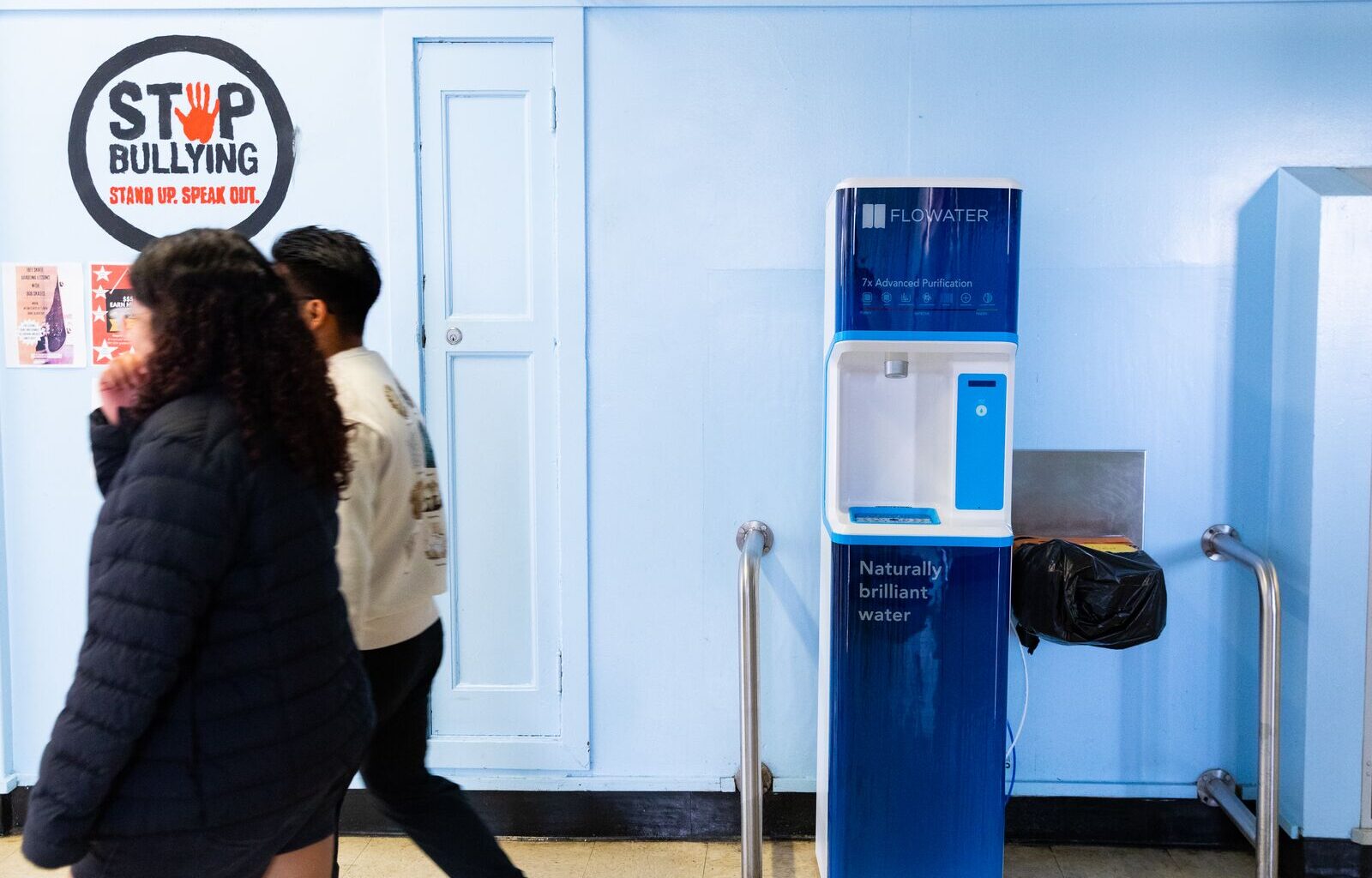Oakland Unified School District officials said yesterday that they are making major strides in lead remediation efforts at the city’s public schools, more than a year after The Oaklandside broke the story that lead-contaminated water had been discovered at dozens of them.
Drinking water sources at 70 of OUSD’s 76 school sites are now testing below the district’s standard of 5 parts per billion, staff said Thursday. Over the summer, OUSD reported that it completed testing of all school water fountains, filtered water stations, and kitchen sinks, collecting 6,781 samples. All but eight of the district’s kitchen sinks are now functional and testing below the threshold for repair, said Nilufar Abdul, OUSD’s assistant project manager for systems and services.
“We’re making consistent and measurable progress with the 70 schools that are now fully passed,” Abdul said at an Oct. 16 meeting of the school board’s facilities committee. “I think that’s a big step forward and we’re going to continue working towards providing safer drinking water to our students and staff.”
Last year, routine water testing in OUSD revealed elevated lead levels in drinking water at dozens of school sites. In some cases, lead levels were 10 or 20 times higher than OUSD’s permitted amount of 5 parts per billion. Much of the testing happened in the spring and summer of 2024, but students, families, and staff weren’t notified until August, when the district began posting test results revealing the scope of the problem. Lead poisoning is especially dangerous for children and can cause developmental delays and learning disabilities.
Following the revelations, district officials made promises last fall to be more transparent and communicative about testing and results; to provide more filtered water stations and reusable water bottles to schools so students, teachers, and staff have access to clean water; and to conduct comprehensive testing of all drinking water sources across the district to determine the sources of the contamination.
When a water source is tested, the district has said, it’s taken out of service until plumbing teams have made repairs, usually by adding a filter, and then retested. School board policy requires the district to notify the school community within one day whenever a drinking water source tests above 5 parts per billion.
Over the summer, OUSD added 60 additional FloWater filtered water stations to campuses, Abdul said, making progress toward the district’s goal of one station for every 100 students at each school site. Nineteen schools currently meet that ratio, according to the district’s online dashboard, while 47 schools have one station for every 100 to 200 students, and 10 schools still have more than 200 students per water station. Another 23 water stations will be installed soon, Abdul said.
A new dashboard for test results
Staff are also working to develop a testing dashboard, which will display test results across school sites.
“That will help us communicate the testing data more transparently and easily interpretable to the public,” Abdul said. “One of the biggest feedbacks I got speaking to schools was that a lot of people didn’t know how to interpret the data.”
The district currently posts the lab reports themselves online, which can be tricky for laypeople to interpret.
Staff will present the dashboard at the next facilities meeting, scheduled for Nov. 20, Abdul said.
The school board allocated $20.5 million in March to fund lead remediation efforts, a combination of bond measures and one-time funding.
The district is also working on an automated notification system for schools, Abdul said, that will let principals and other school site leaders know when testing is taking place, when repairs have been completed, and when retests will happen.
In 2024, one district staff person was responsible for receiving test results, reaching out to facilities staff to make repairs, and contacting school sites to let them know about the testing and results, for nearly 80 school sites, resulting in a communications breakdown. In response to those problems, OUSD officials tasked a larger team of risk management, communications, and buildings and grounds staff to collaborate on handling lead testing, remediation, and communications.
The school board’s facilities committee will receive a more substantial update on the district’s water quality efforts at the next meeting on Nov. 20, according to Preston Thomas, OUSD’s chief systems and services officer.
“*” indicates required fields

